Bricks have been essential for building purposes for a very long time now.
This is one of the most common materials, and its first known dates back to 7000 BC. These bricks were discovered at the site of an ancient settlement around Jericho in Southern Turkey.
Now, modern bricks consist of various materials, one of the prime ingredients being clay. But the very first bricks were made of mud in regions with warm climates and then left in the sun to dry and harden up.
Despite mud bricks being around the longest, fired bricks are the strongest and longest-lasting building materials being used since 4000 BC.
Before we jump into why standard brick dimensions are important, let’s take a closer look at and break down this common building material.
What Are The Different Types of Bricks?
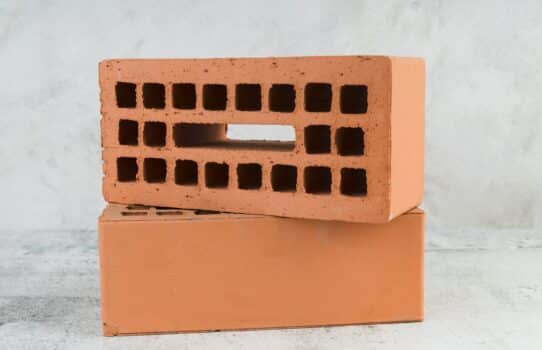
Several brick types essentially boil down to the material used to create it, ranging from – clay, sand and lime to concrete and more. Each of these is responsible for creating the following:
- Unfired bricks
- Fired bricks
- Chemically set bricks
1. Unfired Bricks
These air-dried bricks are made of a mixture of mud, sand, loam, and water. The binding materials that bring it all together are rice husks and straws. And have been around for as long as 9000 BC.
But why were they air dried? Well, mud bricks were easier to make in warmer regions due to the unavailability of a kiln. However, brickmakers would often extend the brick’s life by putting fired bricks on top. And somewhere around 3,500 BC, brickmaking was going to see its greatest breakthrough yet.
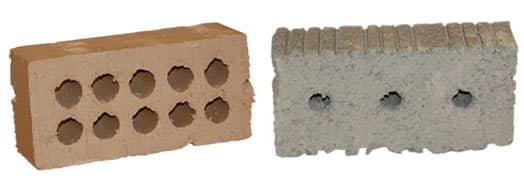
2. Fired Bricks
Up until this innovation, it was only possible to make bricks in hotter regions. However, fired bricks were a game-changer for the rest of the world. In fact, from 4000 BC onwards, brickmakers would fire up mud bricks to increase their durability and strength.
Now, the fire clay bricks, as the name suggests, have great resistance against high temperatures used in kilns, furnaces, fireplaces, and more. And the modern fired conventional bricks we see today are made of clay and are formed using one of the following processes:
- Dry Pressed
- Extruded (common method depending on the country)
- Soft Mud (common method depending on the country)
This innovation encouraged the Romans to create their bricks during spring, store them for a certain period, and then they’d sell or use the bricks themselves.
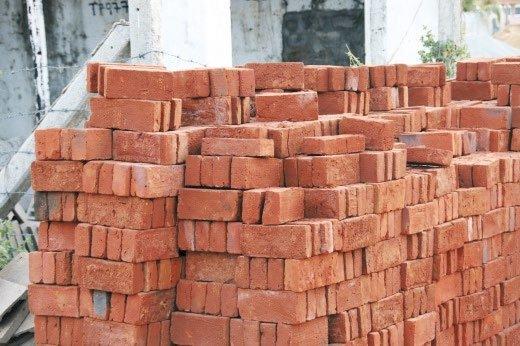
3. Chemically Set Bricks
Unlike the other types, these particular bricks don’t come in contact with fire directly, but they still go through a heating process. How? To accelerate the curing process, they expose the bricks to heat and pressure in an autoclave.
Sand lime or calcium-silicate bricks are made with lime and clay binding the silicate material and come in various colors. These bricks were common in Europe in the 1970s.
That being said, we keep hearing how bricks are essential building material, but what makes them so important? Read through the following points:
- Bricks can resist and withstand wind force during a storm compared to fiber and vinyl materials. And they can withstand a wind force of more than 80 mph.
- Constructed using a natural clay material, you can continue to reuse the bricks – causing minimum waste.
- Clay bricks don’t catch fire quickly and have a fire-resistance up to 2,000 degrees Fahrenheit.
- Bricks can offer the best moisture control in the house if constructed from the perfect combination of clay and water.
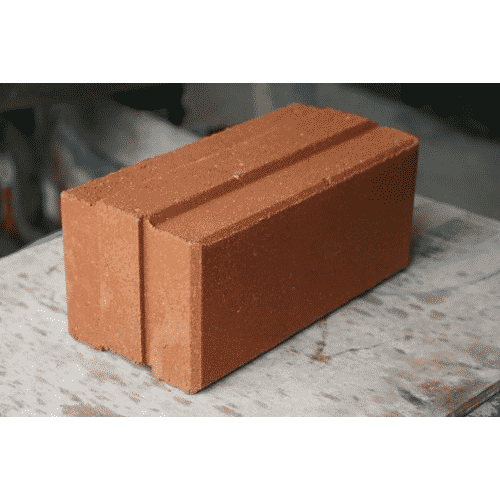
What Are Brick Grades?
You can indicate the durability of the brick upon being exposed to moisture and freezing by brick grades. But the three factors that aid in determining that is the saturation coefficient, water absorption, and compressive strength.
A. Negligible Weathering (NW or NX) is when bricks are used indoors and won’t come in contact with cold and damp conditions.
B. Moderate Weathering (MW or MX) bricks have a slightly higher compressive strength than NW bricks and come in handy in places where they won’t be around freeze-thaw cycles.
C. Severe Weathering (SW or SX) is the standard most brick manufacturers stick to due to it being the most durable. This means it can come in contact with the ground or freeze-thaw cycles.
Standard Brick Dimensions
The standard size of a brick plays an essential part during design and construction, and it helps if you know your way around the different dimensions.
Different Brick Dimensions
1. Actual dimensions
As soon as the brick comes out of the manufacturing plant, its final measurements would be the actual brick dimensions. This is within a tolerance of the specified size – ASTM C652 ( standard specification for hollow brick) and ASTM C216 (standard specification for facing brick). And these may vary depending on the brick’s size and type is.
However, these are minimal and won’t usually affect the architectural design.
2. Nominal dimensions
Nominal dimensions of bricks are utilized in modular construction, and this is the specified size plus the width of a mortar joint. These bricks are manufactured where the nominal sizes produce modules of 4 or 8 inches, which is the same as the modules of building materials, such as doors, windows, and wood components.
3. Specified dimensions
The specified dimension of bricks is the kind architects use when designing a wall. It is when the anticipated manufactured dimensions of bricks are considered without considering the mortar joint size.
And the specified size is only included in an architect’s drawings and specifications. In non-modular construction, the specified size is only used in the absence of corresponding nominal dimensions.
What Is the Difference Between Non-Modular and Modular Brick Dimensions?
The sizing of the nominal dimensions of modular bricks is so when they’re put in groups they are equal to round numbers. And it’s easier to put them in slots together in renovations or construction due to how specific and inevitable their sizes are. This way, you can substitute them for missing or damaged bricks.
Now, the difference between the two types of bricks is that the modular kind has actual, nominal, and specified dimensions. On the contrary, non-modular kind are missing the nominal dimensions.
Mortar joint sizes can vary quite a lot, but according to building codes and certain specifications, the most conventional size is 3/8 of an inch. It is also common for them to be 1/2 of an inch as well.
It isn’t easy to fit the non-modular into conventional structures like doors or window openings because they aren’t standard. They’re instead ideal for unorthodox builds.
But because larger bricks are cheaper, you might end up saving a good amount of money with these bricks. For example, a wall constructed entirely of modular brick will be 25% more expensive compared to the overall price of a non-modular king brick wall.
However, if you’re looking for the idea of facing bricks, then larger bricks tend to work better due to the possible difference in structural capabilities. Similarly, it might not be as easy to work your way around heavier bricks, seeing how bricklayers are commonly known to grip bricks one-handed while expediting the procedure.
What Are The Modular Brick Types?
There is a variety of modular brick types based on the thickness (inches) and dimensions (D x H x L). And they are as follows:
For A Thickness of 3/8 inches, The Dimensions Are:
- Modular: 3 5/8 mm x 2 1/4 mm x 7 5/8 mm by 4 x 2 2/3 mm x 8 mm
- Roman: 3 5/8 mm x 1 5/8 mm x 11 5/8 mm by 4 mm x 2 mm x 12 mm
- Jumbo: 3 5/8 mm x 2 3/4 mm x 8 mm by 4 mm x 3 mm x 8 mm
- Utility: 3 5/8 mm x 3 5/8 mm x 11 5/8 mm by 4 mm x 4 mm x 12 mm
- Norman: 3 5/8 mm x 2 1/4 mm x 11 5/8 mm by 4 mm x 2 2/3 mm x 12 mm
- Meridian: 3 5/8 mm x 3 5/8 mm x 15 5/8 mm by 4 mm x 4 mm x 16 mm
For A Thickness of 1/2 inches, The Dimensions Are:
- Roman: 3 1/2 mm x 1 1/2 mm x 11 1/2 mm by 4 mm x 2 mm x 12 mm
- Jumbo: 3 1/2 mm x 2 1/2 mm x 8 mm by 4 mm x 3 mm x 8 mm
- Utility: 3 5/8 mm x 3 5/8 mm x 11 5/8 mm by 4 mm x 4 mm x 12 mm
- Norman: 3 1/2 mm x 2 1/4 mm x 11 1/2 mm by 4 mm x 2 2/3 mm x 12 mm
- Meridian: 3 1/2 mm x 3 1/2 mm x 15 1/2 mm by 4 mm x 4 mm x 16 mm
What Are The non-Modular Brick Types?
There is a variety of non-modular brick types based on thickness and dimensions (D x H x L). And they are as follows:
- King – for a thickness of 3/8 inches, the dimensions are 2 3/4 mm x 2 5/8 mm x 9 5/8 mm and for 1/2 inches, the dimensions are 3 mm x 2 3/4 mm x 9 3/4 mm
- Queen – for a thickness of 3/8 inches, the dimensions are 2 3/4 mm x 2 3/4 mm x 7 5/8 mm and for 1/2 inches, the dimensions are 3 mm x 2 3/4 mm x 8 mm
- Standard – for a thickness of 3/8 inches, the dimensions are 3 5/8 mm x 2 1/4 mm x 8 mm and for 1/2 inches, the dimensions are 3 1/2 mm x 2 1/4 mm x 8 mm
What Is The Standard Brick Size?
Standard brick sizes may vary from country to country, with their dimensions noted down as depth x height x length. And these can be expressed in terms of metric units, millimeters, inches, or imperial units. The specified dimensions in select countries for standard bricks are as follows:
- In USA, the standard brick sizes ( D x H x L) is 3 5/8 mm x 2 1/4 mm x 7 5/8 mm
- In the UK, the standard brick dimensions ( D x H x L ) are 4 mm x 2 1/2 mm x 8 1/2 mm
- In Australia, the standard brick sizes are (D x H x L ) are 3 mm x 4 1/3 mm x 9 mm
- In India, the standard brick dimensions are ( D x H x L ) are 4 1/4 mm x 2 1/2 mm x 9 mm
What Are Brick Bonds?
It is fairly common to come across bond patterns in various forms of brickwork and are useful for different purposes. But listed below are the bonds usually found on construction faces.
1. English Bond
This pattern creates a brick wall that’s sturdy and thick by alternatively placing rows of header and stretcher courses.
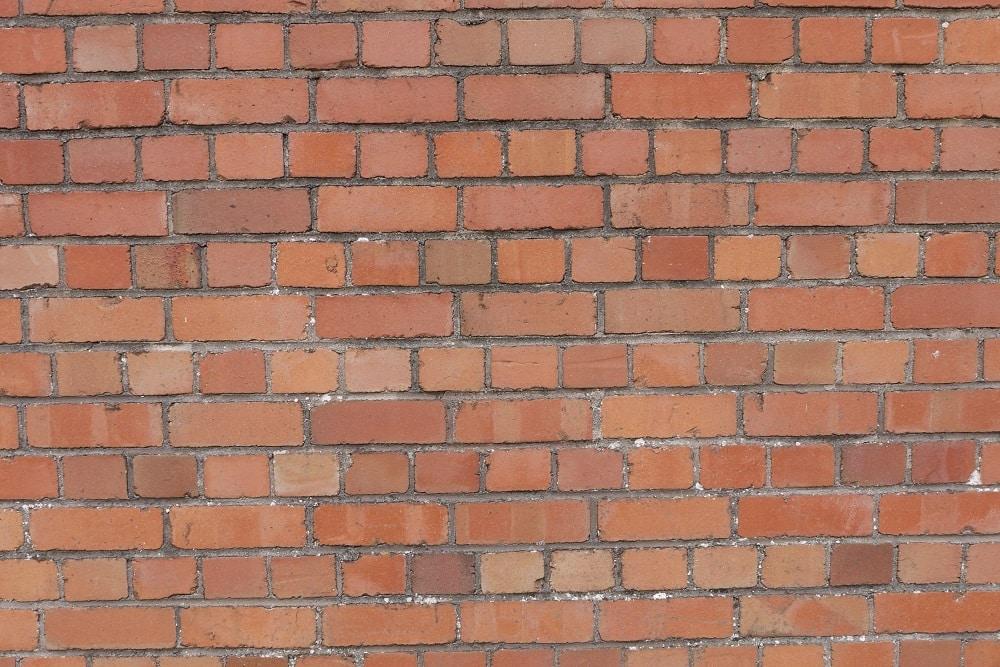
2. Stretcher Bond
It creates less wasted material because it is exclusively of stretchers, which means they don’t need to cut the bricks to size.
3. Common Bond
This is a sequence consisting of stretcher courses alongside a header course alternating between every sixth and seventh course.
4. Header Bond
Another technique used to achieve thick brick walls is having all header courses with an overlap at half-width.
5. Stack Bond
This bond creates a more symmetrically pleasing look because they all happen to be stretcher courses, with each brick stacked on each other, lining the joints. Since it has very little to no structural value, it is usually used just for show.
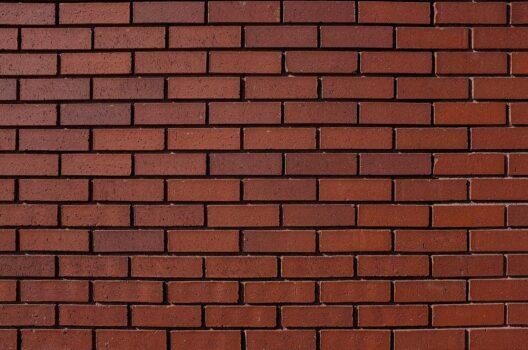
Conclusion
As common as bricks are to our surroundings, it’s surprising that most didn’t know where they originated from or how many variations of them existed. And with how meticulous bricklaying can be, it’s evident that bricks have aesthetic as well as functional properties.
Bonds can be a little creative, seeing how when it comes to bearing bonds, the structural aspect isn’t involved. However, these aren’t the only ones. The other kind comes in handy in situations that don’t require much load-bearing.
The type of bond and kind of bricks you choose will always be heavily influenced by the kind of project you work on. And regardless of what that may be, it is essential to understand brick dimensions, sizes, and the type of material you have access to complete your project successfully.
Related Articles
59 Cool Rock, Concrete & Brick Patio Ideas to Realize Now


